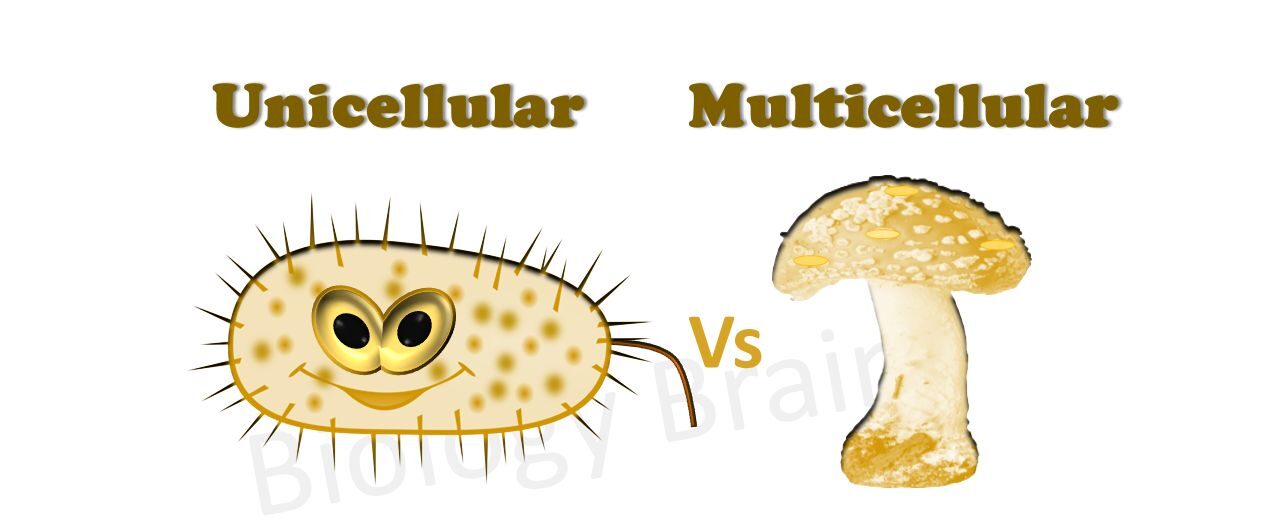The number of cells present in the living forms and their cellular functions makes the organisms specialized from others. Based on the cell number, the organisms have been divided into two types unicellular and multicellular organisms.
The major differences between unicellular and multicellular organisms have been given below.

Unicellular vs Multicellular organisms
1. Unicellular organisms
Examples of Unicellular organisms: Bacteria, Eubacteria, Diatoms, Protozoa, Protista, Dinoflagellates, etc.
Body:- Body is made up of single-cell and contains limited organelles in its cytoplasm.
Cell division: For cell division, it uses energy produced from its cellular organelles and consumes less energy for cell division compared to multicellular organisms.
Metabolism: In single-cell organisms, the complete metabolism takes place in the cytoplasm itself. A single cell carries out all the molecules essential for metabolic processes.
Cellular exposure: The cell body is exposed to the environment on all sides and this feature provides it a benefit to uptake the nutrients and signals from surroundings.
Size: A unicellular organism cannot attain a large size of its body because it has a limit imposed by surface area to volume ratio
Life span: This organism shows a very short lifespan due to its high metabolic rate and reproduction.
Power of division: Power of division is not lost because one cell replicates into two cells.
Regeneration: The concept of regeneration in unicellular organisms makes no sense, because if one cell dies, then the whole organism will disappear.
Partition of the role: In unicellular organisms, there are no cellular compartments and they do not have different types of cells to share developmental and metabolic roles. Hence, the cell has the same role for itself and the organism.
Death: Death rate is very high compared to multicellular organisms because, in unicellular organisms, a simple cellular injury can cause total organism death.
2. Multicellular organisms
Examples of multicellular organisms: Fungi, Algae, Plant, Animals, etc.
Body: The body is made up of various cell types. The cell contains several organelles in its cytoplasm and each organelle is designed for a specific function.
Cell division: Division of labor can be at cellular, tissue, organ, and organ system level. It gives a high degree of operational efficiency compared to unicellular organisms.
Partition of the role: Different cells are specialized to perform different functions including reproduction, mobility (locomotion), respiration, digestion, sensing, consumption of nutrients, etc.
Cellular exposure: Only outer cells are specialized to face the environmental challenges and provide the protection for total body. Inner cells are designed for other cellular functions.
Death: Injury or death of some cells does not affect the organisms because the damaged cells can be replaced by new cells (Regeneration).
Size: A multicellular organism can show changes in body size by increasing the number of cells.
Life span: Lifespan is very long in these organisms because one cell shares cellular processes with others; thus, they take less burden for completing the essential metabolic processes.
Power of division: Some cells lose the power of division because only a few cells have the required features for reproduction.
Regeneration: The capacity of regeneration decreases with increasing specialization in higher organisms.
Dual role of the cell: Every cell in the organism performs a dual role. One for themselves and the other for the whole organism. This feature represents the major difference between unicellular and multicellular organisms.










